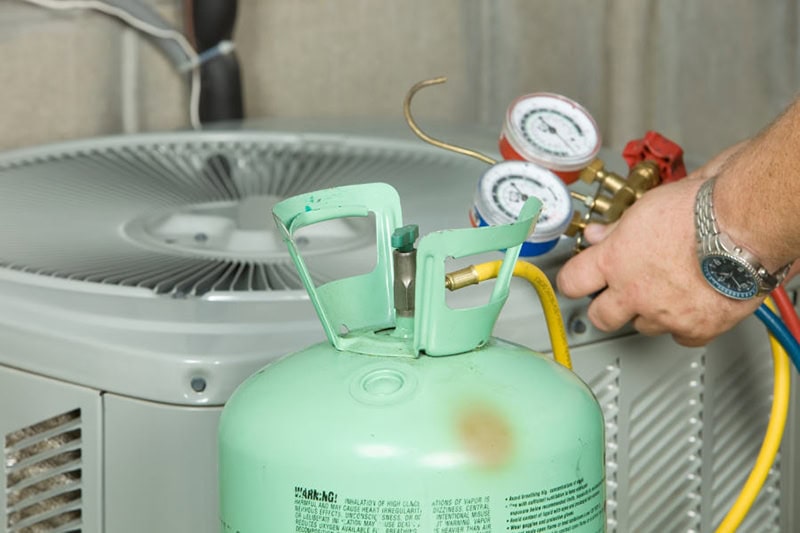FAQs About the New AC Regulations

Maybe you have already heard of the mandates set by US Environmental Protection Agency (EPA) regarding your home’s air conditioner refrigerant. Or maybe you haven’t.
Either way, The Tedder Company professionals are getting asked these questions more frequently from Tennessee homeowners, we thought sharing them and their answers may be beneficial to you.
Q. What are these new air conditioning regulations?
A. In a worldwide effort to protect the ozone layer, a 1987 international treaty, the Montreal Protocol on Substances that Deplete the Ozone Layer, specified a phaseout schedule of harmful chemical compounds considered ozone-depleting substances (ODS).
Consistent with the Montreal Protocol, EPA mandated regulations specifying the amount of ODS that may legally be produced or imported into the United States, along with its usage. One such ODS is a popular refrigerant, R-22 or Freon®. By the year 2020, this hydrochlorofluorocarbon, or HCFC-22, can no longer be imported or produced here.
Q. How can I tell if I use R-22 in my air conditioner?
A. If you look on your air conditioner’s manufacturer’s data plate or nameplate, it will specify what type of refrigerant your system takes. This data plate should be located on the side of your condenser, which is your outdoor component, or your air handler (if you have one), which is your inside unit. If you use R-22, it will read R-22 or maybe HCFC-22.
You may have another refrigerant instead, such as R-410A or HFC-410A (commercially called Puron®, EcoFluor®, Forane®, or Genetron®), one of the replacement refrigerants or hydrofluorocarbons created as a step-down phaseout compound. Other alternative refrigerants are R-134a, R-507, R-404A, and R-407c, though R-410A is the best alternative option for residential air conditioners.
These, too, will be phased out—by 2050. Unlike HCFCs, they pose no harm to the ozone layer, but they are greenhouse gases with a high global-warming potential (GWP) much like HCFCs and their predecessors, chlorofluorocarbons or CFCs.
You might also be able to detect your refrigerant type by its manufacture date. If yours is prior to 1996, you will use R-22. If it’s 1996 through 2009, it could be either R-22 or another like R-410A. Finally, if it was manufactured in 2010 or later, it will likely be an alternative such as R-410A. (Beginning January 1, 2010, all new systems were required to utilize an alternative.)
Q. I have R-22. What should I do?
A. If your air conditioner is currently working well, you don’t need to do anything except continue to enjoy your cool air. The problem will arise if your system needs recharging with refrigerant. At that point, you will need to decide if you will recharge, retrofit, or replace the unit. You simply can’t use one of the newer refrigerants as a substitute in your system as is.
If you recharge, be prepared to pay a lot more for the R-22, as it’s difficult to come by, and you may wait a while for it, as it may take longer to acquire it. The R-22 will either be from a stockpiled or a recycled or reclaimed refrigerant supply.
If you retrofit, one of our professionals will modify your system by installing new parts and/or your outdoor condenser to accept a replacement refrigerant (if your indoor coils are new-refrigerant compatible). This may not provide the optimum comfort and efficiency you want, but it is less expensive than a total system replacement.
If you replace, our professionals can help you assess which new system would be best suited for your home and needs. Call us to come out for a complimentary consultation.
For help with any of these three options, call and speak with one of our knowledgeable and experienced team members.
Q. How much can I expect to pay for refrigerant?
A. In the HVAC world, refrigerant costs are calculated per pound. How much refrigerant your unit takes depends on your system’s size. The standard amount of needed refrigerant is two to four pounds per ton of your air conditioning unit. Most units are between one and five tons in size.
R-22 has always cost more than other refrigerants, but now you can expect to pay near triple the price for it. R-401A, as well as other HFCs, used to cost much less than R-22, but the price is creeping up due to it being the leading residential air conditioning refrigerant.
As we move closer to 2020 and even 2050, prices are going to fluctuate depending on the market. It’s all about demand. Call us and ask for our current refrigerant pricing, since it will change.
Talk to Us About Your Air Conditioning Needs
At The Tedder Company, we are the leading air conditioning specialists here in the Brentwood area. These refrigerant regulations can get confusing, as there’s a lot to know. Our experts are available at any time to answer your questions or to schedule service on your air conditioner. Call us at 615-890-4515 or request service online. We are here for you.
